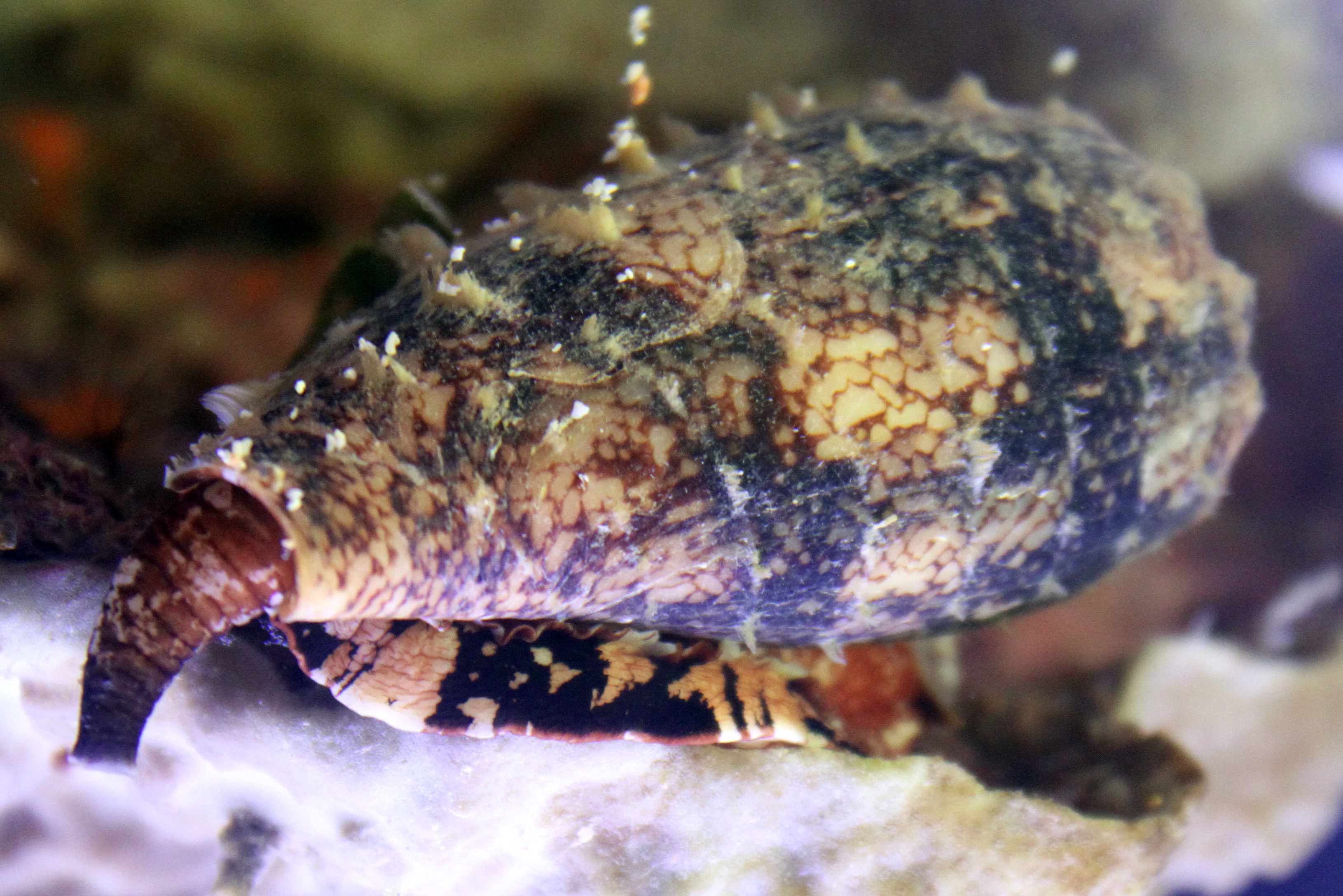Ecology & Evolution of Venomous Mollusks
Ecology & Evolution of Venomous Mollusks
Ecology & Evolution of Venomous Mollusks

Estimated to comprise over 10,000 living species, the predatory prosobranch gastropods within the taxonomic superfamily Conoidea are arguably the largest single group of venomous animals presently known. What is surprising is that these slow-moving soft-bodied animals can be abundantly found on tropical coral reefs, which can be summed up by the universal motto 'eat or be eaten.' The genus Conus (suborder: Toxoglossa), commonly referred to as the cone snails, are the most famous of all venomous molluscs, as they have received a great amount of attention from pharmacologists for their ability to produce a functionally diverse group of small disulfide-rich peptides that act predominantly by wreaking havoc on the nervous systems of their prey and an even greater amount of attention from shell collectors for their incredibly ornate shells. Ecologically speaking, cone snails can be categorized into three groups, depending on their target prey: (i) the vermivorous cone snails are worm hunters that feed on polychaetes, hemichordates and echiuroid worms; (ii) the molluscivores are snail hunters that prey upon other gastropods; and (iii) the piscivorous cone snails are remarkable fish hunters who have venoms capable of rapidly paralyzing fish. The innate beauty of this classification system is that it takes evolution into account while providing a classification system that potentially reflects upon the active components present in the venom, simply because venom components are heavily selected for by the necessity to rapidly subdue prey. What may work on snails, won't necessarily work on fish; and examples of this can be found in the prey-specific activity associated with crude venoms isolated from Conus species with different prey. My research interests include: (i) cataloging the feeding behavior of these incredible animals, understanding the biochemical mechanism by which the components of their venoms act; (ii) the biological diversity of neogastropod symbionts; (iii) the phylogenetic diversity that has resulted from the evolution of venom as a predatory strategy; and (iv) the application of venom components as pharmaceutical therapies to treat a variety of illnesses including cancer. These research interests are a great way to integrate both classical taxonomic and ecological approaches with modern scientific techniques (e.g., genetics, pharmacology, and marine natural products chemistry) in an effort to increase the awareness of molluscan species diversity in marine environments and their potential for enhancing the quality of life on Earth.

